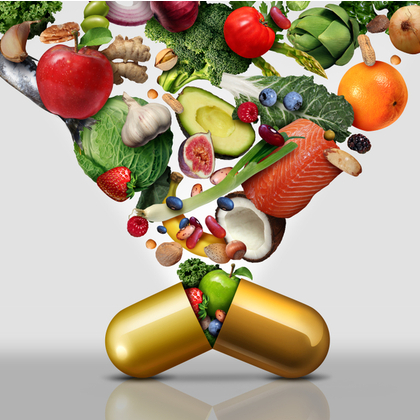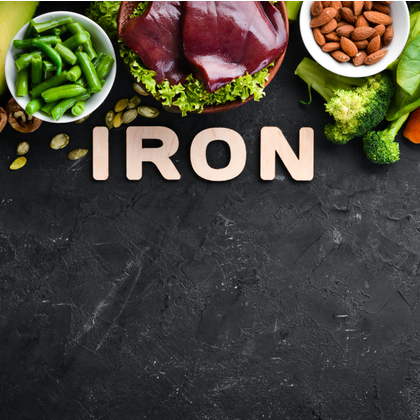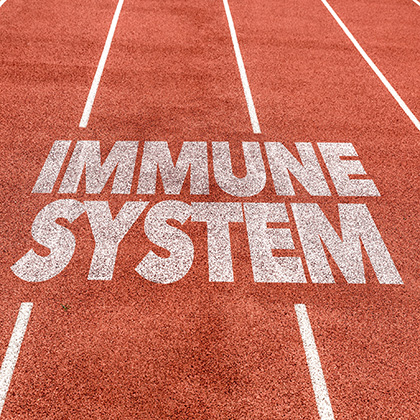
Growing children need the right amount of vitamins and minerals to stay healthy. But does that mean you should give them a multivitamin?
Many health experts suggest children who eat a healthy, balanced diet can get everything they need from their food. Nevertheless there may be several circumstances where children don’t eat as healthily as they should. Some may be very fussy eaters, for instance, and go through phases when they refuse to eat certain foods (particularly vegetables).
Other children who may be at risk of not getting all the nutrients they need include those who follow certain types of diets, those with food allergies and those with medical conditions that affect their ability to absorb nutrients effectively (children with coeliac disease or inflammatory bowel disease, for instance, may not be able to absorb some vitamins and minerals properly (i)).
Giving your child a multivitamin could help make sure they’re getting the essential nutrients their growing bodies need. However if you have any concerns about your child’s health, always see your doctor before giving them any type of supplements.
Levels and guidelines
Children need exactly the same nutrients as adults but depending on their age they usually need them in different – typically smaller – amounts. This is why it’s important to give a younger child a multivitamin that’s been formulated for their specific age group rather than one designed for adults and teenagers, as some vitamin and minerals can be toxic to children if taken in large amounts.
Levels of individual nutrients in multivitamins are represented by nutrient reference values (NRVs). These have been set by the EU and represent the amount of vitamins and minerals needed daily to prevent deficiency and deficiency-related diseases. At the moment NRVs only apply to adults, as they have not yet been set for children. It is, however, common for children’s vitamin and mineral supplements to include NRV information on their labels.
In the UK we also have Dietary Reference Values (DRVs), which cover daily requirements for many vitamins and minerals in adults as well as children aged one to 18 years (ii). DRVs were published by the Committee on Medical Aspects of Food and Nutrition Policy (COMA) in 1991. COMA has since been replaced by the Scientific Advisory Committee on Nutrition (SACN).
Nutrient requirements by age
As children get older they have different nutritional requirements (iii):
1 - 3 years
At this age, children are growing quickly, so they have an increased need for most vitamins and some minerals. The Department of Health recommends children of this age are given vitamin supplements containing vitamins A, C and D every day – see ‘Babies and toddlers’, below (iv).
4 - 6 years
Children in this age group continue to have an increased need for most vitamins and minerals. Department of Health recommendations for vitamin A, C and D supplements continue until children are five years old.
7 - 10 years
Similarly, children in this age group continue to have an increased need for most vitamins and minerals.
11 - 14 years
Up until the age of 11, boys and girls need around the same amount of vitamins and minerals. After that their vitamin and mineral requirements start to differ as they approach puberty. Boys of this age have an increased need for all vitamins and minerals, while girls need more minerals, particularly iron when their periods start.
15 - 18 years
Differences remain in vitamin and mineral requirements for boys and for girls at this age, with girls still needing more iron. Both need a higher level of many vitamins and minerals.
Types of supplements
All younger children have roughly similar nutritional needs, which explains why different multivitamin products aren’t usually available for boys and for girls. Teenagers’ vitamin requirements, on the other hand, broadly fall between those of adults and children, with girls generally needing more iron.
If you’re looking for a multivitamin for younger children, a good-quality general children’s multivitamin should cover all their needs. Some parents buy gummy vitamins for younger children because they may be more likely to take something that looks more like a sweet than a tablet. But there is a potential risk with gummy vitamins, as they can be toxic if a child eats too many. This is why it’s really important to keep these types of vitamins – and all other tablets or medicines – well out of your child’s reach (ideally locked away).
Teenage girls may benefit more from a multivitamin aimed at adult women, as these usually contain more iron as well as more calcium (many teenage girls may not get adequate levels of calcium in their diets). For teenage boys, a general multivitamin (not high-dose) with some iron aimed at adults should be ideal.
Which vitamins should a multivitamin contain?
If you’ve decided a multivitamin is the right thing for your child, a good-quality product – whatever their age – will usually include the following vitamins:
Vitamin A
Also called retinol, this is an essential nutrient for a healthy immune system. Vitamin A also helps you see more clearly in dim light, and help keeps the skin healthy.
The NRV for vitamin A is 800 micrograms (µg).
DRVs include:
| Age | |
|---|---|
| 2-3 | 400µg |
| 4-6 | 400µg |
| 7-10 | 500µg |
| 11-14 | 600µg |
| 15-18 | 700µg (males) / 600µg (females) |
Good food sources: eggs, cheese, milk, yoghurt, oily fish and fortified foods.
Vitamin B1 (thiamin)
Thiamin is needed for a healthy nervous system, plus it helps release energy from food.
The NRV for thiamin is 1.1 milligrams (mg).
DRVs include:
| Age | |
|---|---|
| 2-3 | 0.4mg |
| 4-6 | 0.6mg |
| 7-10 | 0.7mg |
| 11-14 | 1mg (males) / 0.8mg (females) |
| 15-18 | 1mg (males) / 0.8mg (females) |
Good food sources: eggs, wholegrain bread, fresh and dried fruit, peas and fortified foods.
Vitamin B2 (riboflavin)
Like many of the other B vitamins, riboflavin helps the body release energy from food. It also helps keep the nervous system, skin and eyes healthy.
The NRV for riboflavin is 1.4mg.
DRVs include:
| Age | |
|---|---|
| 2-3 | 0.6mg |
| 4-6 | 0.6mg |
| 7-10 | 1mg |
| 11-14 | 1.2mg (males) / 1.1mg (females) |
| 15-18 | 1.3mg (males) / 1.1mg (females) |
Good food sources: eggs, milk, yoghurt, oats, mushrooms, rice and fortified foods.
Niacin
Also called vitamin B3, niacin is necessary to release energy from food, and it keeps the nervous system and skin healthy.
The NRV for niacin is 16mg.
DRVs include:
| Age | |
|---|---|
| 2-3 | 7.2mg (males) / 6.6mg (females) |
| 4-6 | 0.6mg |
| 7-10 | 1mg |
| 11-14 | 1.2mg (males) / 1.1mg (females) |
| 15-18 | 1.3mg (males) / 1.1mg (females) |
Good food sources: eggs, milk, wheat flour, fish and meat.
Vitamin B6
B6 – or pyridoxine – helps your body use and store energy from the food you eat, and also helps to form haemoglobin, which transports oxygen around your body in your red blood cells.
The NRV for riboflavin is 1.4mg.
DRVs include:
| Age | |
|---|---|
| 2-3 | 0.7mg |
| 4-6 | 0.9mg |
| 7-10 | 1mg |
| 11-14 | 1.2mg (males) / 1mg (females) |
| 15-18 | 1.5mg (males) / 1.2mg (females) |
Good food sources: fish, bread, eggs, poultry, vegetables, peanuts, milk, potatoes and some fortified foods.
Vitamin B12
You need B12 to make red blood cells and release energy from food. It also helps to keep your nervous system healthy, and helps your body use folic acid (see below).
The NRV for vitamin B12 is 2.5µg.
DRVs include:
| Age | |
|---|---|
| 2-3 | 0.5µg |
| 4-6 | 0.8µg |
| 7-10 | 1µg |
| 11-14 | 1.2µg |
| 15-18 | 1.5µg |
Good food sources: milk, cheese, eggs, meat, salmon, cod and some fortified foods.
Folate (folic acid)
Folate is the natural form of the B vitamin that’s found in foods. Folic acid, on the other hand, is the man-made form of folate. It’s needed to help your body to produce healthy red blood cells. It’s also important for women who are pregnant or may become pregnant, as it reduces the risk of central neural tube defects – spina bifida, for example – in unborn babies.
The NRV for folate/folic acid is 200µg (women who are pregnant or trying for a baby need 400µg until the 12th week of their pregnancy).
DRVs include:
| Age | |
|---|---|
| 2-3 | 70µg |
| 4-6 | 100µg |
| 7-10 | 150µg |
| 11-14 | 200µg |
| 15-18 | 200µg |
Good food sources: leafy green vegetables, broccoli, peas, chickpeas and fortified foods.
Vitamin D
Vitamin D is needed to help keep bones, teeth and muscles healthy – if children have a deficiency of vitamin D, they can develop rickets, a condition that affects bone development.
The NRV for vitamin D is 5µg, though the UK Department of Health recommends a daily intake of 10µg.
DRVs include:
| Age | |
|---|---|
| 2-3 | 10µg |
| 4-6 | 10µg |
| 7-10 | 10µg |
| 11-14 | 10µg |
| 15-18 | 10µg |
Good food sources: oily fish, egg yolks and fortified foods. The main source of vitamin D is sunlight (your body creates vitamin D when your skin is exposed to the sun).
Vitamin C
This is needed for a number of functions in the body, including keeping the cells, skin, blood vessels, bones and cartilage healthy. According to the NHS, mild deficiencies can affect babies given unsupplemented (not fortified) cows’ milk (v).
The NRV for vitamin C is 80mg.
DRVs include:
| Age | |
|---|---|
| 2-3 | 30mg |
| 4-6 | 30mg |
| 7-10 | 30mg |
| 11-14 | 35mg |
| 15-18 | 40mg |
Good food sources: kiwi fruit, citrus fruit, mango, pineapple, strawberries, blueberries, watermelon, green and red peppers, sweet potatoes, tomatoes, broccoli, Brussels sprouts, spinach and other leafy greens.
Which minerals should be in a multivitamin?
A good children’s multivitamin will also include several important minerals, including:
Calcium
Calcium is essential for children because it helps build strong bones and teeth. Like vitamin D, calcium can cause rickets in children whose levels are too low.
The NRV for calcium is 800mg.
DRVs include:
| Age | |
|---|---|
| 2-3 | 350mg |
| 4-6 | 450mg |
| 7-10 | 550mg |
| 11-14 | 1000mg (males) / 800mg (females) |
| 15-18 | 1000mg (males) / 800mg (females) |
Good food sources: dairy foods such as milk, cheese and yoghurt; soya foods, nuts, green leafy vegetables (but not spinach) and fortified foods.
Iron
Children need iron because it helps to make red blood cells, which transport oxygen throughout the body. It’s also important for their growth and development. If they don’t get enough, they can develop iron-deficiency anaemia.
The NRV for iron is 14mg.
DRVs include:
| Age | |
|---|---|
| 2-3 | 6.9mg |
| 4-6 | 6.1mg |
| 7-10 | 8.7mg |
| 11-14 | 11.3mg (males) / 14.8mg (females)* |
| 15-18 | 11.3mg (males) / 14.8mg (females)* |
** The amount for girls aged 11 - 18 may not be high enough if they have heavy periods (ii).
Good food sources: red meat, beans, nuts, dried fruit, brown rice, dark-green leafy vegetables and fortified foods.
Magnesium
Magnesium helps with energy production, plus it’s important for bone health. It may also help with children’s sleep and mood.
The NRV for magnesium is 375mg.
DRVs include:
| Age | |
|---|---|
| 2-3 | 85mg |
| 4-6 | 120mg |
| 7-10 | 200mg |
| 11-14 | 280mg |
| 15-18 | 300mg |
Good food sources: dairy foods, nuts, green leafy veg, brown rice, meat and fish.
Zinc
Important for the normal growth and development of reproductive organs and the brain, zinc is also needed for a healthy immune system.
The NRV for zinc is 10mg.
DRVs include:
| Age | |
|---|---|
| 2-3 | 5mg |
| 4-6 | 6.5mg |
| 7-10 | 7mg |
| 11-14 | 9mg |
| 15-18 | 9.5mg (males) / 17mg (females) |
Good food sources: meat, dairy foods, wholegrain bread, wheatgerm, seafood.
Selenium
This is another mineral that’s important for a healthy immune system.
The NRV for selenium is 55µg.
DRVs include:
| Age | |
|---|---|
| 2-3 | 15µg |
| 4-6 | 20µg |
| 7-10 | 30µg |
| 11-14 | 45µg |
| 15-18 | 70µg (males) / 60µg (females) |
Good food sources: fish, meat, eggs, Brazil nuts.
Iodine
Iodine helps the thyroid gland produce hormones that are needed for children’s growth and development. Thyroid hormones are also essential for a healthy metabolism.
The NRV for iodine is 150µg.
DRVs include:
| Age | |
|---|---|
| 2-3 | 70µg |
| 4-6 | 100µg |
| 7-10 | 110µg |
| 11-14 | 130µg |
| 15-18 | 140µg |
Good food sources: Eggs, meat, dairy foods, fish and shellfish. It can also be found in plant foods, but how much iodine plants such as grains contain depends on the level in the soil where they are grown.
Babies and toddlers
The Department of Health recommends all children aged six months to five years are given supplements that contain vitamins A, D and D every day, as they may not get enough of these vitamins even if they eat healthily (iv).
It also suggests that babies being breastfed should have a vitamin D supplement every day from birth, whether their mothers are taking vitamin D themselves or not. This is important because, while vitamin D is found in some foods, the best source is summer sunlight (this reacts with your skin to produce vitamin D in your body).
However, children under the age of six months should be kept out of direct sunlight completely, and children of all ages should be protected from the sun as much as possible. Even if they spend a short amount of time in the sun, they should still have vitamin D drops. The Department of Health recommends the following:
-
Babies from birth to one year of age who are being breastfeed need a daily supplement of vitamin D (8.5 - 10µg).
-
Babies who have at least 500ml of formula milk every day shouldn’t have any vitamin supplements – including vitamin D – because formula is already fortified with nutrients.
-
Children aged one to four should have a 10µg vitamin D supplement every day.
The Healthy Startscheme provides vitamin drops for children at no or low cost. If you qualify for the scheme, you can get information about the vitamin drops from your health visitor. If you don’t qualify for Healthy Start, speak to a pharmacist or a nutritionist about the type of supplement that would be most suitable for your baby or toddler at their age. It’s also important to make sure babies and children only get the dose recommended on the label, as some vitamins can be harmful if a child takes too much of them.
For more information on a health issues that affect children visit our children’s health page.
References:
-
Pacheco. GG, Cortes EC, Castillo-Duran. C. Micronutrient deficiencies and celiac disease in Pediatrics. Arch Argent Pediatr. 2014 Oct;112 (5):457-63.Available online (in Spanish): https://www.sap.org.ar/docs/publicaciones/archivosarg/2014/v112n5a12.pdf
-
Available online: https://assets.publishing.service.gov.uk/government/uploads/system/uploads/attachment_data/file/618167/government_dietary_recommendations.pdf
-
Available online: https://www.nutrition.org.uk/nutritionscience/nutrients-food-and-ingredients/nutrient-requirements.html?start=5
-
Available online: https://www.nhs.uk/conditions/pregnancy-and-baby/vitamins-for-children/
-
Available online: https://www.nhs.uk/conditions/vitamins-and-minerals/vitamin-c/
Related Posts
Disclaimer: The information presented by Nature's Best is for informational purposes only. It is based on scientific studies (human, animal, or in vitro), clinical experience, or traditional usage as cited in each article. The results reported may not necessarily occur in all individuals. Self-treatment is not recommended for life-threatening conditions that require medical treatment under a doctor's care. For many of the conditions discussed, treatment with prescription or over the counter medication is also available. Consult your doctor, practitioner, and/or pharmacist for any health problem and before using any supplements or before making any changes in prescribed medications.

Christine
Christine Morgan has been a freelance health and wellbeing journalist for almost 20 years, having written for numerous publications including the Daily Mirror, S Magazine, Top Sante, Healthy, Woman & Home, Zest, Allergy, Healthy Times and Pregnancy & Birth; she has also edited several titles such as Women’ Health, Shine’s Real Health & Beauty and All About Health.
View More



